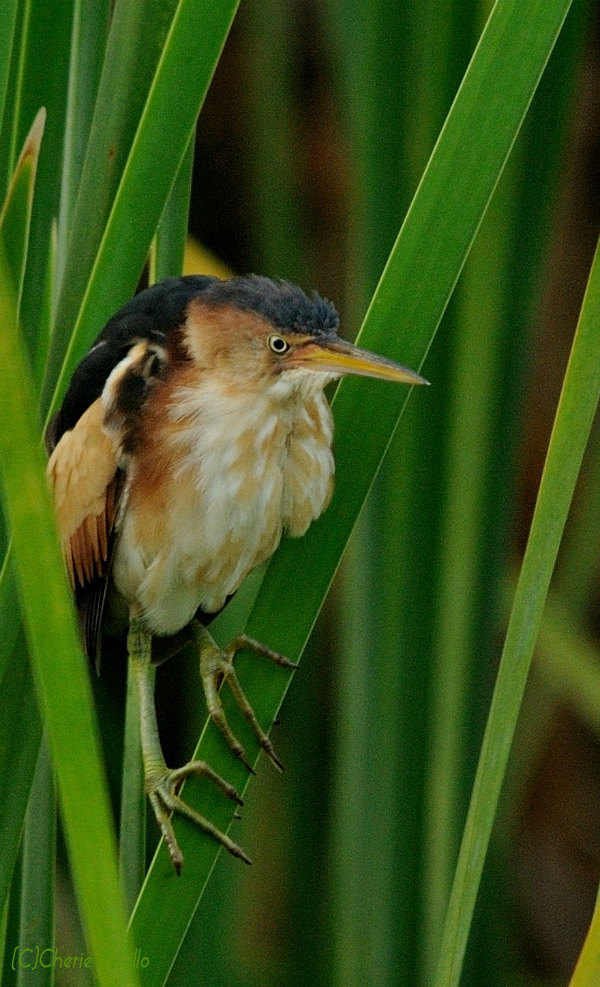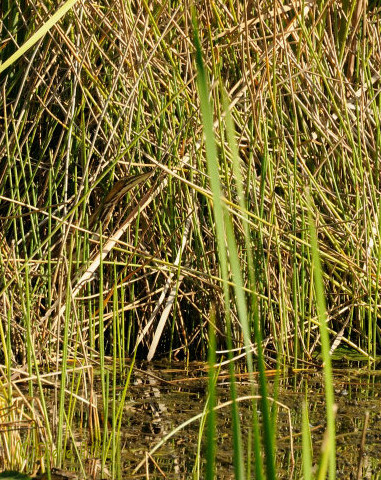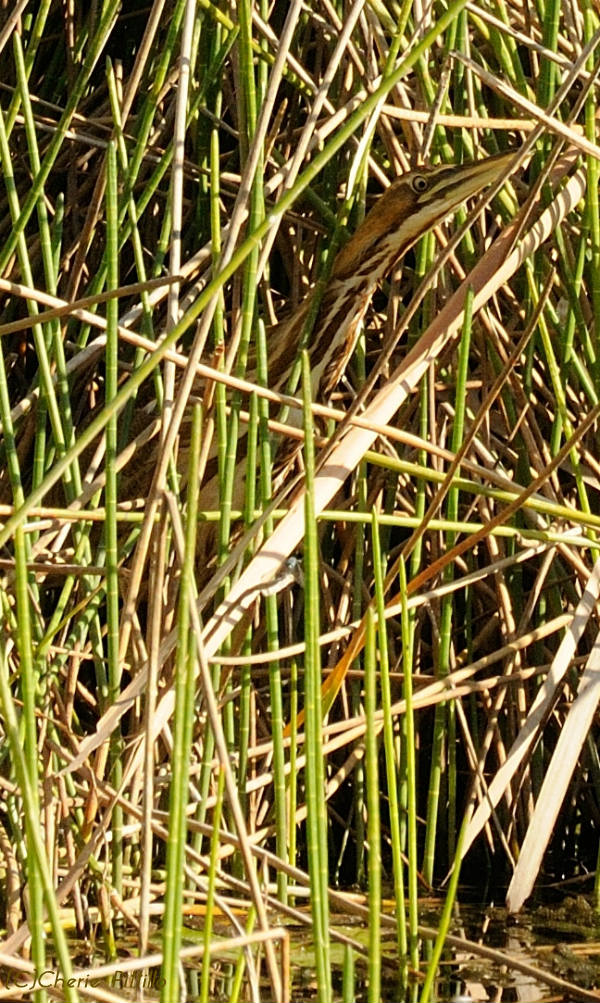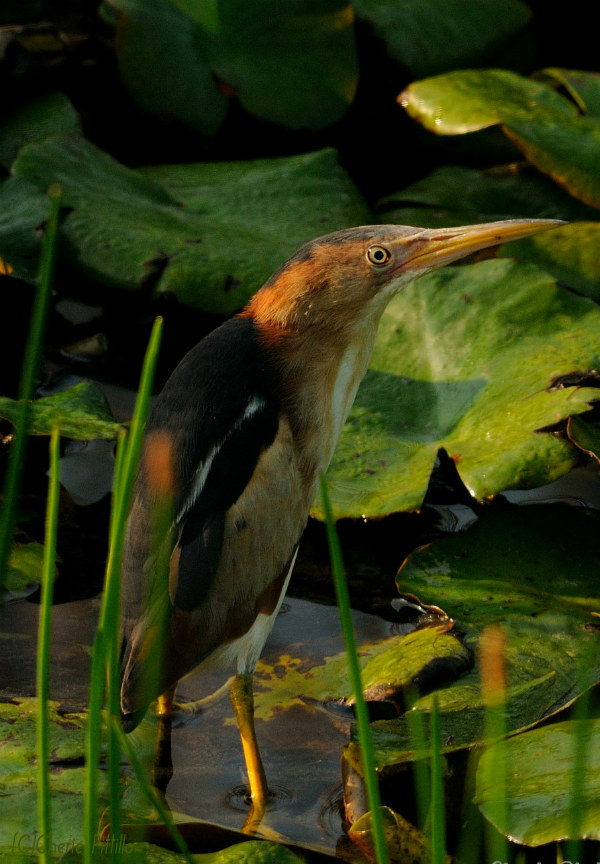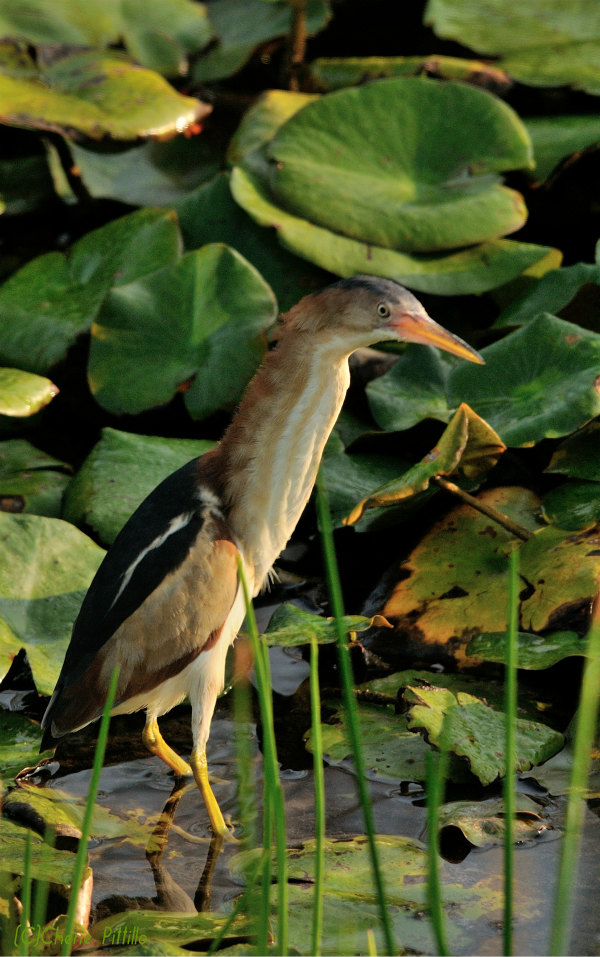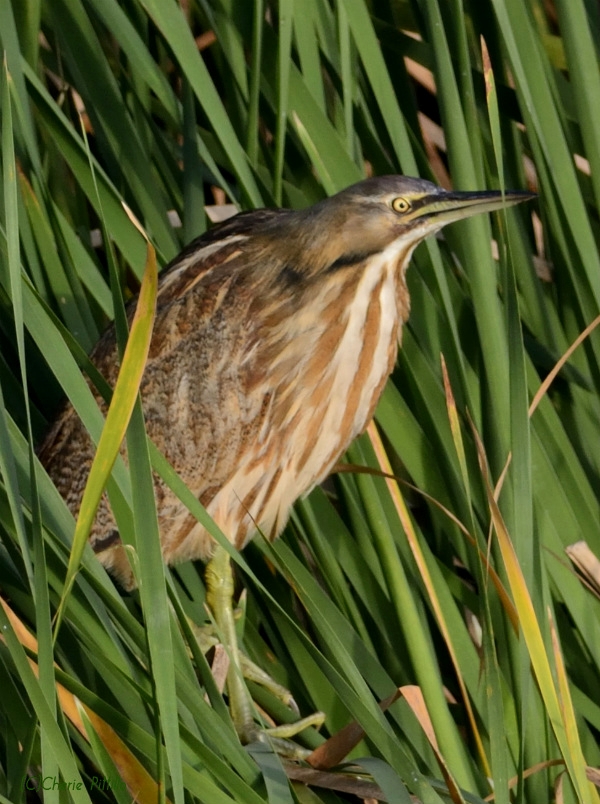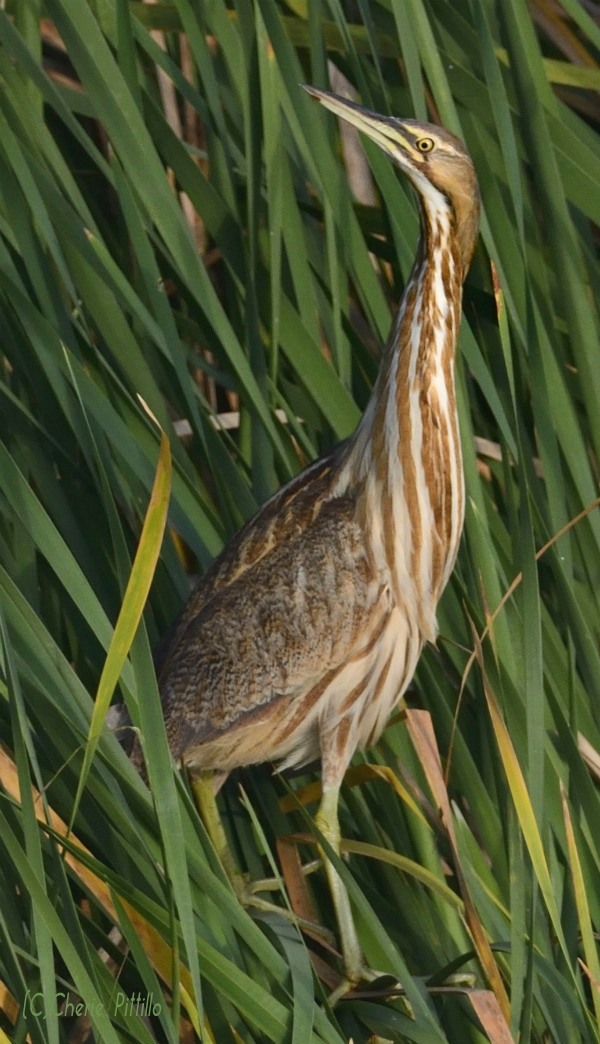In the Yucatan are some herons lesser than other members of the heron family of herons, night-herons, tiger-herons, egrets and bitterns? With the name of Least Bittern, is it a lesser heron? Hmmm. Only in size. As a foot long, football shaped bittern, this species wins as one of the smallest herons in the world! Sometimes the least can be the best.
Meanwhile its taller cousin, the American Bittern, also lives in the Yucatan as well as another bittern I’ve never observed, the Pinnated Bittern. All three live in the Yucatan all or part of the year and are well-camouflaged and well-adapted for their lives in marshes. Note the difficulty in spotting the American Bittern in its habitat. I would give it an award for its percussionist’s call. Don’t miss this extraordinary sound!
Click here to listen to American Bittern:
These shy, secretive herons skulk. Yep, a word I’ve not used often, but skulking benefits them to capture their meals of fish, frogs, crustaceans, insects, reptiles, and small mammals. (I wonder if they use skulk caps.)
Like typical herons the bitterns compress their necks into their bodies in flight. When hunting, their necks can extend as if attached to hydraulic lifts.
By the way, if you happen to check out bitterns at Cornell’s Lab of Ornithology website or bird field guides to North America, those resources state only two bitterns exist in North America, the Least Bittern and the American Bittern. Keep in mind their information doesn’t include Mexico or any Central American countries when North America is listed. It’s frustrating to me, and yes, I’m “em-bitterned” about it!
As far as the bitterns in Yucatan, I’ll now vote them as better’n those bird field guides of North America!
In PART 5 I’ll wrap up the heron family in the Yucatan with a couple of species.
MENTIONED SPECIES:
- Least Bittern, Ixyobrychus exilis, Avetoro Menor (Spanish)
- American Bittern, Botaurus lentiginosus, Avetoro Norteño, (Spanish)
- Pinnated Bittern, Botaurus pinnatus, Avetoro Neotropical (Spanish)
DISCLAIMER: References do not agree on details about this species. Here are my resources: Sal a Pajarear Yucatan Guia de Aves, A Guide to the Birds of Mexico and Northern Central America, Birds and Reserves of the Yucatan Peninsula, http://macaulaylibrary.org/ a website from Cornell Lab of Ornithology, Lives of North American Birds, www.allaboutbird.org
Cherie Pittillo, “nature inspired,” photographer and author, explores nature everywhere she goes. She’s identified 56 bird species in her Merida, Yucatan backyard view. Her column, published on the 7th and 21st of each month, features anecdotes about birding in Merida, Yucatan and beyond. Contact: [email protected] All rights reserved, ©Cherie Pittillo



